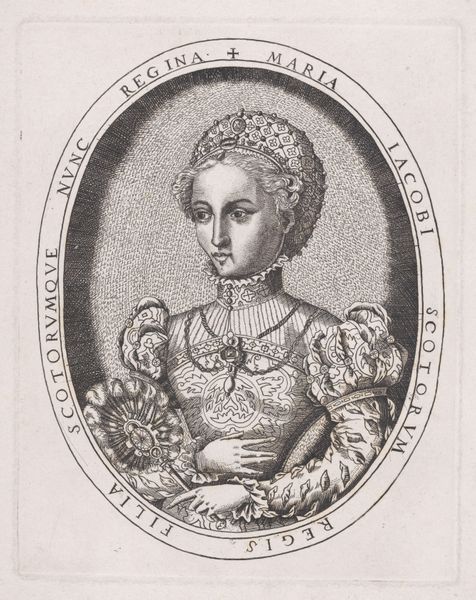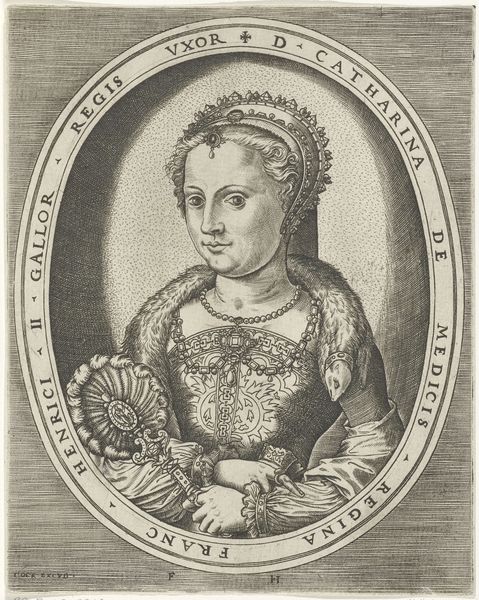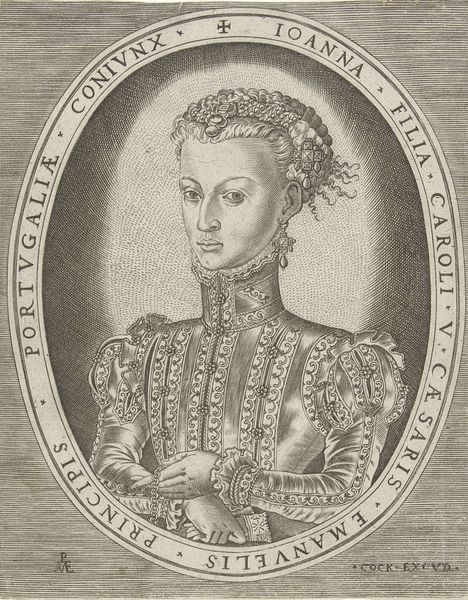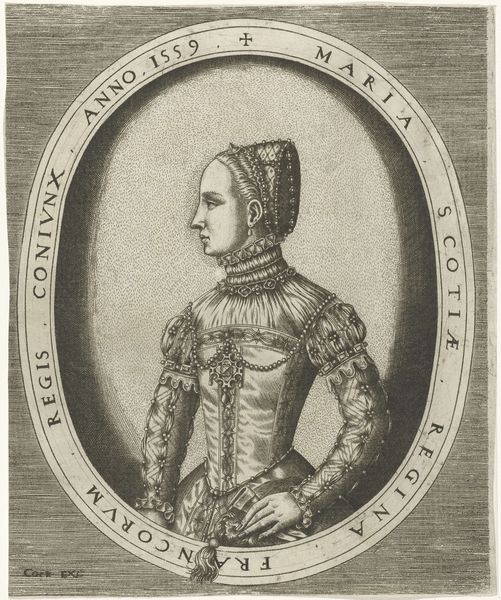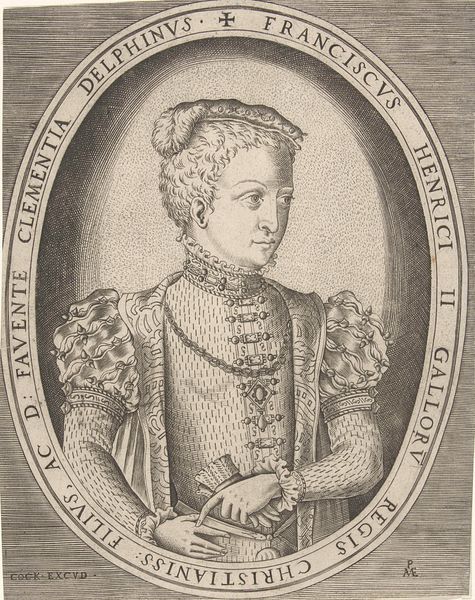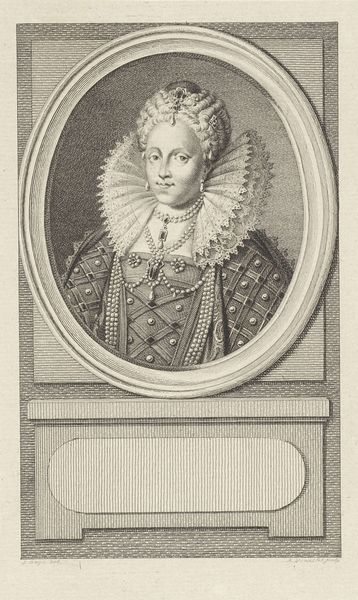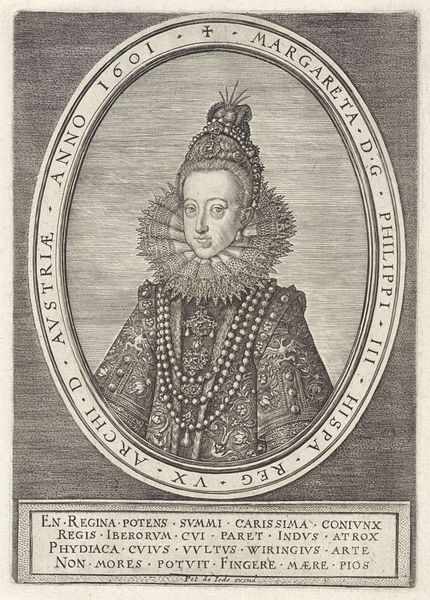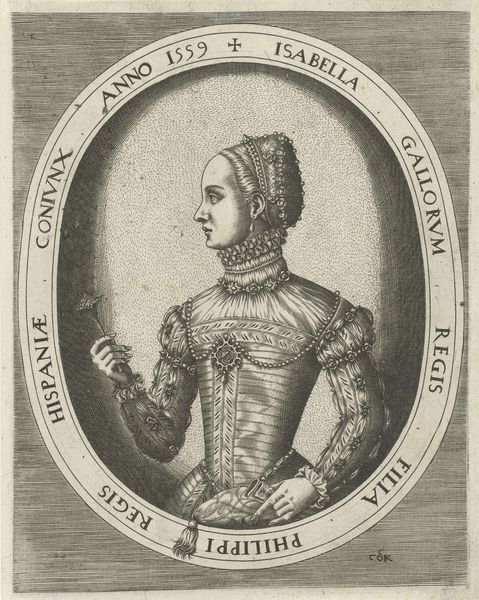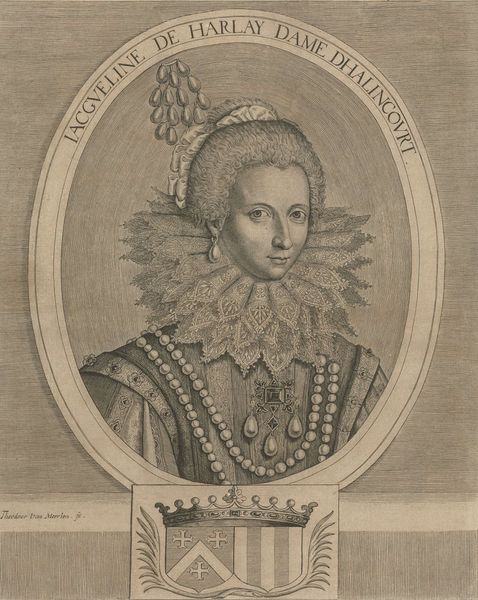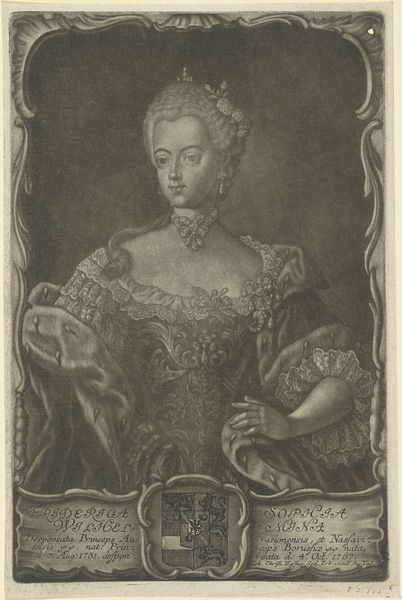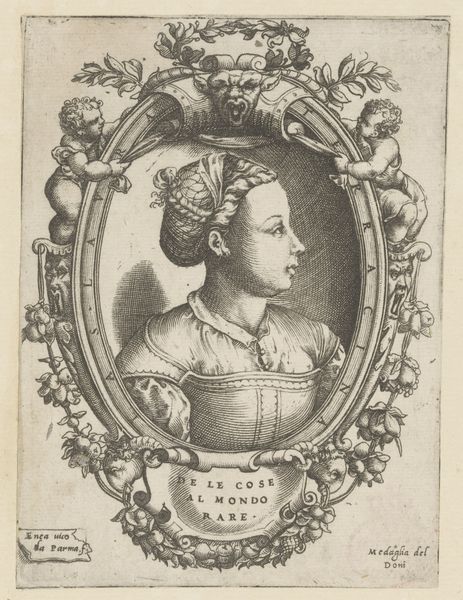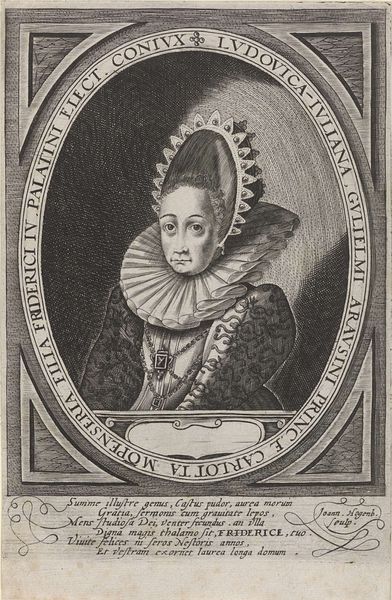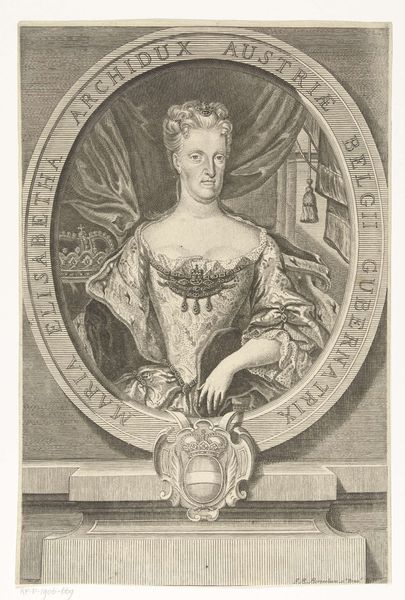
engraving
#
portrait
#
old engraving style
#
caricature
#
11_renaissance
#
portrait drawing
#
history-painting
#
northern-renaissance
#
dress
#
engraving
Dimensions: height 200 mm, width 161 mm
Copyright: Rijks Museum: Open Domain
Curator: So, we're looking at an engraving titled "Portret van Maria I Stuart, koningin van Schotland," or a portrait of Mary, Queen of Scots. It was created sometime between 1542 and 1567 by Pieter van der Heyden. I always feel like engravings possess such intriguing texture! Editor: My first thought is—drama! This engraving feels almost like a captured secret. The dark lines contrast so starkly with the light, highlighting every minute detail. It's an incredibly intricate, and somewhat unforgiving, depiction. Curator: Unforgiving is a great word. Van der Heyden captures a specific image of royalty here, doesn’t he? This engraving is indicative of the printing technologies of the time and speaks to broader patterns of consumption around art. The use of the printmaking craft emphasizes the status of its subject and makes it infinitely reproducible. Editor: Right. The engraving’s material nature underscores a subtle tension: The work seems to want to ennoble Mary through careful crafting and material elevation—see how they reproduced the velvet of her dress or the crown's jewels through such detailed labor. Simultaneously, its being reproducible puts her likeness in circulation, up for grabs, a queen mediated through the printing press. Curator: Exactly. And that clothing… Those intricate details of her dress were likely all someone else’s hard labor to create. Speaking to Mary, she had such a tumultuous and shortened life, didn't she? Looking at the details here, you can almost sense the weight of responsibility. The meticulous detailing is almost claustrophobic. It certainly says 'Queen' but without any of the joyful expression we would attribute to a 'girl'. Editor: There's this compelling duality, a material richness born of unseen labor alongside the burden that this precise visual representation lays upon Mary herself. Considering that engraving allowed for dissemination to a broader audience. In some ways, these were very early forms of royal image crafting! Curator: Yes, and that access gives everyone—then and now—the chance to meditate on what it meant to be Mary, Queen of Scots, beyond just the tragic headlines. That ability for broader contemplation and a new understanding... that’s the true art, isn't it? Editor: Agreed. This engraving reminds us that the "aura" of royalty isn't some ethereal concept but a concrete outcome of materials, skill, and circulation—all tangible things, wrought from specific hands. And now available for our present consideration.
Comments
No comments
Be the first to comment and join the conversation on the ultimate creative platform.
